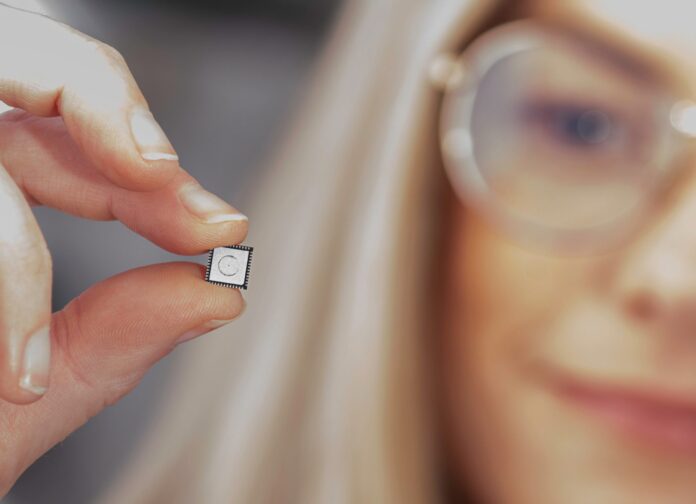Stockholm-based edge AI platform company Imagimob is working with AI chip solution provider Syntiant to integrate its miniaturised machine learning (tinyML) platform with the California firm’s low-power NDP120 AI processor. The combination will enable developers to use the Imagimob platform to create commercial ML applications and quickly deploy ML models on the NDP120 processor – which is well suited to battery constrained IoT applications.
The combined solution supports a range of applications, the pair said, including “event detection, keyword spotting, fall detection, anomaly detection, [and] gesture detection”. The Imagimob platform includes a fall detection starter project, with an annotated dataset with metadata (video), and a pre-trained ML-model (in h5-format) that detects person falls from a belt-mounted device using IMU data; the model can be used and improved with more data.
The NDP120, presented as a ‘neural decision’ processor, brings always-on voice and neural processing to consumer and industrial IoT products. It features Syntiant’s second generation (“Core 2”) deep neural network, and supports Ok Google and Hey Google ‘hotwords’ at under 280uW, according to a press note. “[It] can run multiple applications simultaneously at under 1mW,” said Imagimob and Syntiant in a joint statement.
The Imagimob AI development platform allows developers to go “from data collection to deployment on an edge device in minutes”, the pair state. The Imagimob AI platform is used in a range for on-board edge-based AI in a number of IoT products, including sensors to monitor audio, gesture recognition, human motion, predictive maintenance, and material detection.
Anders Hardebring, chief executive and co-founder at Imagimob, said: “The collaboration with Syntiant will be very valuable for our customers because it allows them to quickly develop and deploy powerful, production-ready deep learning models on the Syntiant NDP120. We see a lot of market demand in sound event detection, fall detection and anomaly detection.”
Kurt Busch, chief executive at Syntiant, said: “Pairing our NDP120 with the Imagimob platform will enable developers to quickly and easily deploy deep learning models. Studies suggest that there are more than 35 million falls in the U.S. alone that require some kind of medical attention, so there is significant opportunity for applications across both consumer and industrial use cases.”
Meanwhile, Imagimob has a new arrangement, as well, to integrate technology from US-based FotaHub for over-the-air tinyML updates into its platform. The deal enables developers to perform “mass deployment and update applications in the field”, it said. Their joint effort will “unleash a dramatic decrease of the effort, time, and cost to get ML-enabled devices ready and evolve them over the whole product lifetime,” it added.
A statement said: “Once an edge ML model is ready for deployment in Imagimob AI, it will be automatically uploaded to a corresponding repository for versioned firmware/ML model updates at FotaHub and become ready for rollout to the end devices. This opens the door for the tinyML world to support continuous learning and integration and deployment of ML models regardless of the targeted microprocessor platform or the physical location of the devices.”
The latest version of Imagimob’s tinyML platform is being offered with a “forever free” for developers, giving initial access to its full functionality, but limiting compute credits. The new release also includes improvements on the AutoML function for deep learning anomaly detection using autoencoders. “Developers can now build anomaly detection applications in less time, and with better performance,” it said.
A new report from ABI Research forecasts the edge ML enablement market – comprising platform vendors offering developers and enterprises an easy way to tailor and commercialise on-device AI – will exceed $5 billion by 2027. ABI Research identifies four major categories of edge ML enablement vendors: public cloud vendors, edge ML silicon vendors, platform-focused vendors, and technology-focused vendors.
It states: “Platform-focused vendors like Edge Impulse, Imagimob, and SensiML offer the most comprehensive databases, tools, libraries, and solutions for edge ML applications… [But] the market is at a nascent stage. The majority of edge ML projects still fail to move past the experimental phase. Edge ML enablement vendors must continue to improve their low-code or no-code user experience for non-AI experts, expand edge ML hardware support, provide application-specific solutions and services, and ensure a high level of ML explainability.”

